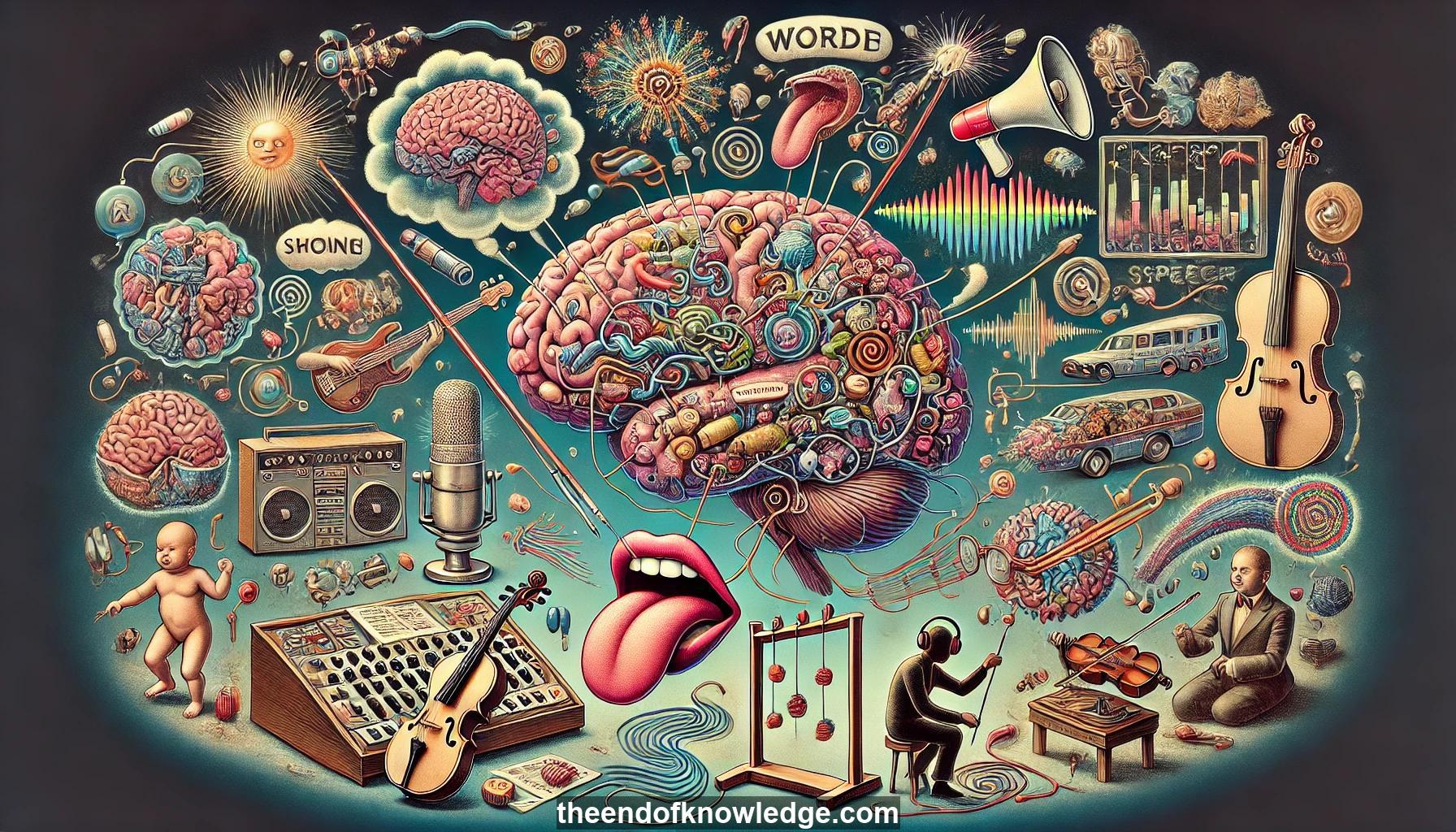 >
>
Concept Graph & Resume using Claude 3.5 Sonnet | Chat GPT4o | Llama 3:
Resume:
1.- Speech motor cortex: Area of brain controlling vocal tract movements for speech production.
2.- Harvey Cushing's discovery: Mapped motor cortex over 100 years ago, showing body parts representation.
3.- Speech production process: Air from lungs, vocal fold vibration, filtered by vocal tract shape.
4.- Epilepsy patient research: Implanted electrodes allow study of brain activity during speech.
5.- Vocal pitch control: Specific brain area discovered for controlling vocal pitch in speech and singing.
6.- Articulatory trajectories: Brain encodes low-dimensional speech primitives for coordinated vocal tract movements.
7.- Speech neuroprosthetics: Technology to restore speech for those with neurological injuries affecting communication.
8.- Locked-in syndrome: Condition where patients retain cognition but are unable to move or communicate.
9.- Two-part decoder: System translating brain activity to vocal tract movements, then to synthesized speech.
10.- Biomimetic approach: Using intermediate articulatory representation reduces required training data for speech synthesis.
11.- Sequence-to-sequence learning: Technique adapted from machine translation for decoding text from brain activity.
12.- BRAVO trial: Clinical trial for speech neuroprosthetics in paralyzed individuals.
13.- Speech detection algorithm: Identifies when the patient is attempting to speak a word.
14.- Word classification: Uses recurrent neural network to determine probabilities of intended words.
15.- Language model integration: Improves accuracy by considering word probabilities and sentence context.
16.- Transfer learning: Applying learned representations from one person's model to another's.
17.- Phoneme vs. articulatory approach: Debate between using linguistic units or physiological movements for decoding.
18.- Electrode resolution: Increasing number and coverage of electrodes for better brain signal capture.
19.- Neuralink: Elon Musk's company developing advanced brain-computer interface technology.
20.- Non-invasive BCI limitations: Current non-invasive methods lack resolution for effective speech decoding.
21.- Training data collection: Challenges in obtaining ground truth data from non-speaking patients.
22.- Feedback incorporation: Potential for using decoded output as feedback to improve model performance.
23.- Commercial prospects: Expectation of commercially available medical speech neuroprosthetics within 10 years.
24.- Memory enhancement: Research into devices that could improve memory function.
25.- Physics simulation: Potential use of vocal tract simulations to augment training data.
26.- Brain's noise filtering: Superior ability of human brain to filter out background noise in speech perception.
27.- Neural networks in neuroscience: Increasing use of neural networks to model and predict brain activity.
28.- Interpretation challenges: Debate over prioritizing predictive power vs. interpretability in brain models.
29.- Visual system modeling: Correspondence between deep neural network layers and visual cortex processing stages.
30.- Context-based decoding: Using prior knowledge of conversation context to improve decoding accuracy.
Knowledge Vault built byDavid Vivancos 2024